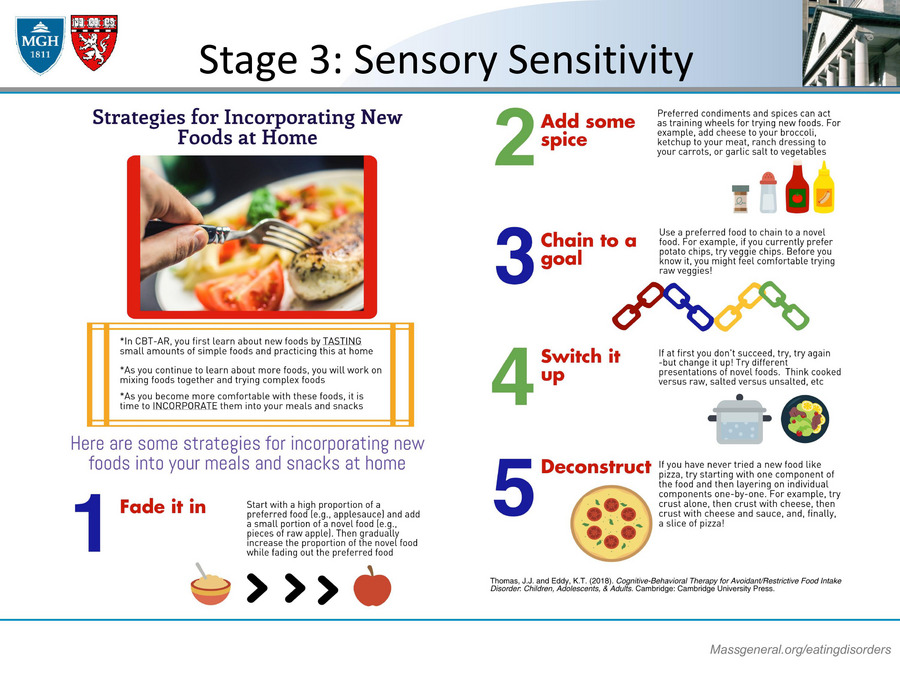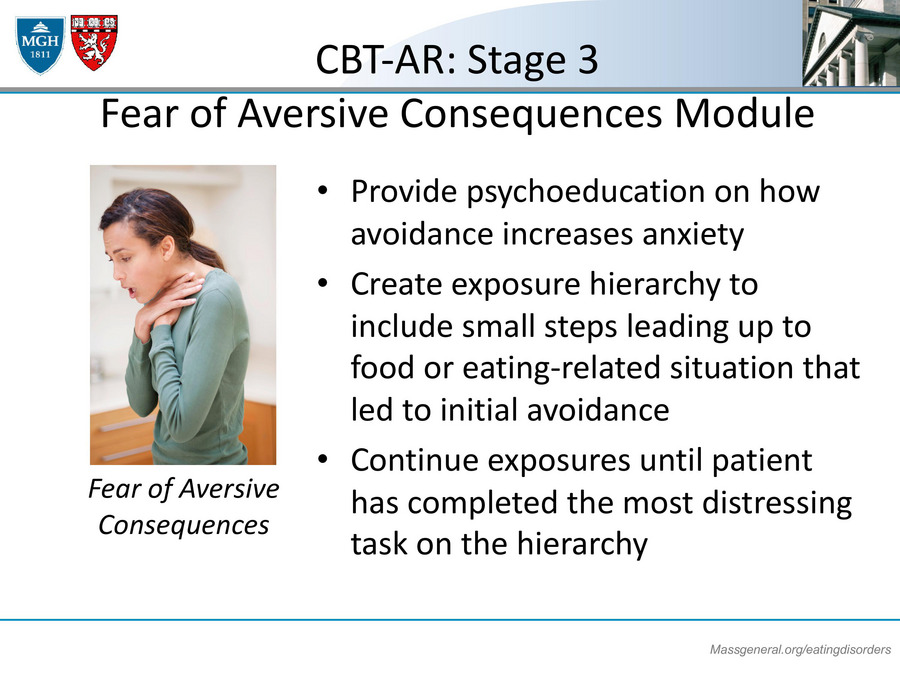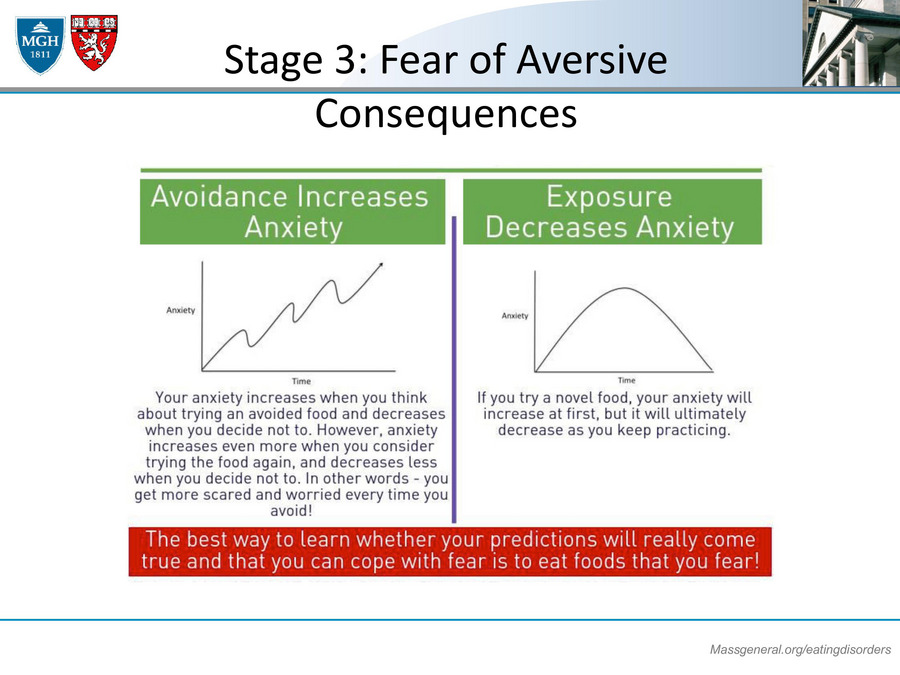How to Treat Patients with ARFID via Telehealth
Abridged transcript and slides
Presented by Dr. Jennifer Thomas (Massachusetts General Hospital) and Elissa Martinez LMFT (Recovery Record)
Access to the full webinar recording and all the slides are availabel from IAEDP.
Pages: 1 2 3 4 5 6 7 8 9 10 11
Stage 3: Sensory Sensitivity
Here's another handout from our workbook where we talk about strategies for incorporating new foods at home. These are just some ideas of how patients can kind of move from maybe one food that they're eating to other ones that they want to practice, things like adding preferred condiments, kind of chaining from one food to another food, switching the presentation, deconstructing by maybe trying all the elements of a mixed dish and then putting them all together, and so on.

CBT-AR Stage - 3 Fear of Aversive Consequences Module
I wanted to also briefly talk about the fear of aversive consequences modules. For patients who have that fear presentation, we will always give them psycho-education on how avoidance increases anxiety, we'll help to create an exposure hierarchy that has like small steps leading up to the food or eating related situation that led to the initial avoidance. So for my patient who had the pork chop fear, in that case we started with on the bottom of the hierarchy with the food she was already eating, like so the Pedialyte and the water, and then kind of moved up from there until the top of the hierarchy was actually the pork chop.

Stage 3: Fear of Adversive Consequences
Then we have them do in-session exposures to these things that they are afraid of. This is just an example handoff from the workbook about how you might present information about how avoiding certain foods or eating situations can actually serve to just prolong anxiety and kind of get in their way, whereas exposure can actually help them to overcome their anxiety. And again, a tip is to use a screenshare when you're on telehealth to present these handouts and review them with the patient.
As an example in session exposure for ARFID with fear of aversive consequences, I might start by asking the patient, let's say they're afraid of eating pizza, "What are you afraid will happen if you eat this pizza?" So they might say, "Well, if I eat the pizza, I'm afraid that I'll vomit." And I'll say, "Well, how certain are you that you will actually throw up?" And they might say like 90%, almost totally sure. And then I'll ask them about their subjective units of distress rating in this moment. Like how distressed are you? They might say 50. Then I'll have them actually eat the pizza. They're on the other side of the screen just eating it and I'm encouraging them and telling them what a great job that they're doing.
